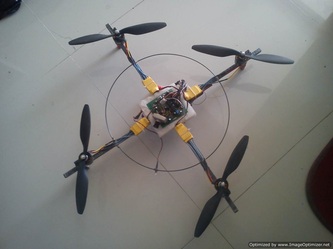

The flatter the blade, the easier it is for the motor to rotate the blade through the air. An almost flat propeller will be just as bad as a steep pitched propeller, that is it will not generate any lift. To produce the required thrust, a quadcopter propeller needs to be designed to be within a specific range of pitch angles.

In other words, the plane with the higher pitch propeller will fly faster.Ĭhanging the propeller pitch will also change the dynamic response of your quadcopter. With both motors/propellers spinning at the same RPM, the higher pitch propeller will travel further in the same amount of time. You can see that the high pitch propeller covers the same distance travelled with only half the rotation of the propeller. In the figure, the two arrow lines show the position of the propeller tips. This is the same effect as a propeller cutting through the air. If you were to take a screwdriver, and screwed both into a piece of wood by making sure you turn the screwdriver at the same speed for both screws, you would notice that the screw with the coarser thread (higher pitch), would sink into the wood more. The screw on the left has a coarse thread (higher pitch), and the screw on the right has a finer thread (lower pitch). To better understand the effect of propeller pitch, imagine two wood screws as shown in Figure 2. The higher the pitch value, the faster your plane will go. However, the pitch is a good measurement that will help you better understand your propeller performance. This is only a theoretical approximation since real world factors such as prop material, air density, and efficiency can influence this distance. The quadcopter propeller pitch is a measurement of how far that a propeller will move through the air for every single rotation of the motor/propeller. Be sure to identify which ones are which. One set is designed to spin clockwise, while the other is designed to spin counter clockwise. Your drone has two different types of propellers and motors. By changing the relative RPMs of the motors, you can cause a yaw rotation of the drone. The counter rotation effect of all propellers cancels out, and you have no rotation. This is why all of the propellers on a multirotor drone do NOT rotate in the same direction (see Figure 1). As the propeller rotates, and pushes through the air, the air pushes back and causes a counter rotation on the body of the drone. Torque is an effect of Newton’s third law, where every action has an equal and opposite reaction. This force is responsible for the ability of the drone to rotate on the yaw axis. Torque is generated when the propellers accelerate up or down. Other props perform much better at higher speeds. Some propellers produce much more thrust when the drone is stationary, as opposed to when it is flying. They are also influenced by the flight dynamics of your quadcopter.

Typically, quadcopter propellers produce more thrust the faster they spin. A good rule of thumb is to design the TWR to be at least a value of two. The thrust to weight ratio TWR (thrust divided by weight), indicates how much thrust your drone generates relative to its weight. To keep your drone flying at a hover, the upward thrust needs to equal the weight of your drone. The upward thrust force generated by the propellers is usually measured in pounds or grams. The purpose of your quadcopter propellers is to generate thrust and torque to keep your drone flying, and to maneuver.


 0 kommentar(er)
0 kommentar(er)
